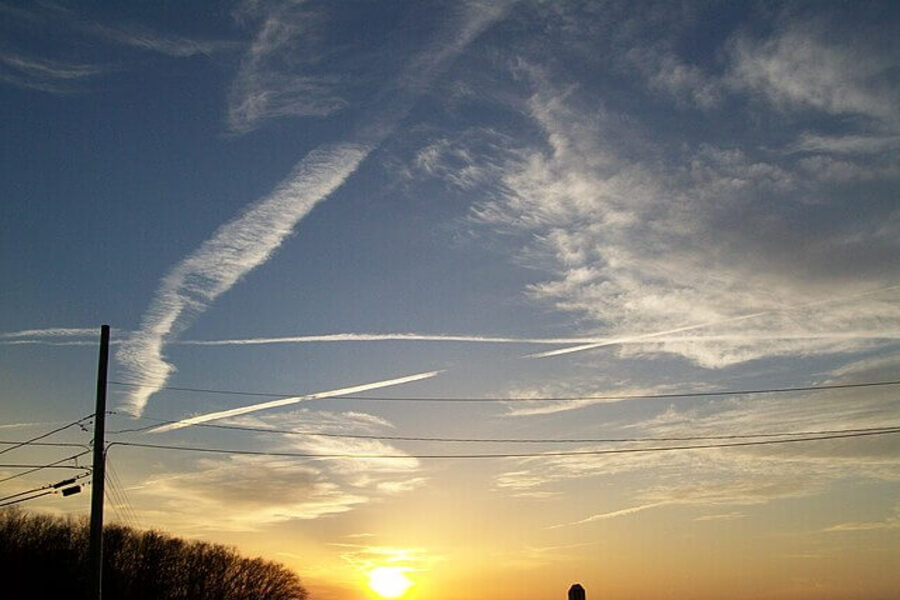Why the Trump Administration’s Policy on Pakistan is Likely to Fail
Editor’s Note: This piece originally appeared on Order from Chaos.
Published by The Lawfare Institute
in Cooperation With

Editor’s Note: This piece originally appeared on Order from Chaos.
Thousands of Pakistani protesters, supporters of the hard-line Tehreek-e-Labaik Islamist party that demands strict adherence to Pakistan’s blasphemy laws, have blocked a main entrance to Islamabad for more than two weeks. They have accused Zahid Hamid, the country’s law minister, of blasphemy after a change last month in the oath for parliament that they construe as blasphemous (and that has since been reversed), and are demanding his resignation. Under Pakistan’s blasphemy law, offending remarks against the Prophet Muhammad are deemed blasphemous and can result in a mandatory death penalty. The change in the oath dealt with wording surrounding the belief in the finality of the Prophet Muhammad, and was considered to be a concession to Ahmadis, a group declared non-Muslim by Pakistan’s constitution.
Blasphemy is a highly charged issue in Pakistan, with vigilante killings of those accused of it, and virulent mass protests against blasphemy law reform. While terrorist attacks in the country have abated relative to the high numbers of a few years ago—largely due to the success of the Pakistan military against the Pakistani Taliban, which stands weakened—ideological extremism continues to thrive.
But the Trump administration’s strategy on Pakistan is not focused on extremism, nor on terrorism within the country. Instead, the administration has made the elimination of safe havens for the Haqqani network—a sophisticated insurgent group that attacks the Afghan government and U.S. troops in Afghanistan—the top priority. The Haqqanis are considered to be backed by important elements within Pakistan’s security establishment, and their attacks are allegedly launched from Pakistan, which explains the rationale behind the current American strategy vis-à-vis Pakistan.
But making the Haqqanis the focal point of the U.S. strategy on Pakistan is a shortsighted view of the bigger picture—Pakistan’s struggle against extremism and terrorism. Until Pakistan itself deals with that bigger picture, heightened U.S. pressure vis-à-vis the Haqqanis is unlikely to work.
Washington Says
The administration’s official rhetoric on Pakistan has varied only in degrees of negativity. Unsurprisingly, President Trump himself has been toughest, saying on August 21 while unveiling the new strategy on South Asia that America can “no longer be silent about Pakistan’s safe havens for terrorist organizations.”
He added: “We are paying Pakistan billions and billions of dollars; at the same time they are housing the very terrorists that we are fighting. But that will have to change.” Even those U.S. officials most sympathetic to Pakistan have been explicit that a productive and positive relationship with Pakistan will depend on eliminating these safe havens.
The administration’s carrot-and-stick strategy is at least partly based on aid. At the end of August, the United States announced that it would release $250 million in military aid to Pakistan when it sees evidence of action against the Haqqanis. President Obama had also pressured Pakistan over the Haqqanis, but not as singularly as Trump.
In a further blow to Pakistan, Trump also called on India to “help us more with Afghanistan, especially in the area of economic assistance and development.”
Pakistan defines itself in terms of the threat it faces from India; in its view, this threat is existential. Trump, therefore, has fueled Pakistan’s biggest fear: that of encirclement by India in the west in addition to the east.
Pakistan Says
Pakistan is stung by this new American approach. In response, it has gone on the defensive, mounting a concerted counter-narrative. In early October, the country sent its foreign and interior ministers to Washington, who, in speeches at various venues across town, laid out the Pakistani side of the story.
Pakistan says that that all safe havens for terrorist groups have been eliminated and touts the sterling success of its military operation against the Tehrik-e-Taliban Pakistan (TTP) in Waziristan, the mountainous region bordering Afghanistan. It alleges that Afghanistan gives safe haven to the TTP, from where it attacks Pakistan.
Pakistan says it cannot be a U.S. ally and be put “on trial” at the same time; that it wants America to see the country through a bilateral prism, not through an Afghanistan lens, nor with reference to the U.S.-India relationship. Pakistani officials have evoked the history of U.S.-Pakistan relationship going back to the 1980s and America’s support of jihadism in the Soviet-Afghan War.
In this, Pakistan has a point. America suffers from historical amnesia in its narrative on Pakistan and Afghanistan. Not acknowledging how America, along with Saudi Arabia and Pakistan, used the notion of jihad at one time to help win the war against the Soviets in Afghanistan only opens the United States up to charges of hypocrisy. The Haqqanis, after all, fought against the Soviets as part of this war.
But Pakistan fails to understand what a successful fight against extremism entails. Its kinetic operation against the Pakistan Taliban, according to the military, has been successful; but on the “soft” side of the fight against extremism, there’s clearly a lag.
Listing how much is spent on various activities to crack down on terrorism, as Pakistani officials did in Washington, is far from proof of effectiveness. Radical Islamic seminaries, or madrassas, continue to function (including, among them, the infamous Dar-ul-Uloom Haqqania in Akora Khattak, where Jalaluddin Haqqani is said to have studied); hate speech abounds; and extremist propaganda still lives on Pakistan’s streets, with sympathizers taking to the airwaves and media outlets.
No one in the United States believes that every single one of the safe havens in Pakistan has been eliminated. Pakistan still doesn’t understand that there is no such thing as strategic militant assets—as it appears to consider the Haqqanis, along with militant groups that attack India—in an environment where extremism festers and where the boundaries of terrorist group ideology, and the groups themselves, are malleable. Assets or not, they can turn against Pakistan, and have in the past.
A Path Forward for the U.S. and Pakistan
In the end, bullying from Washington is unlikely to get Pakistan to censor the Haqqanis. The whole approach stokes fears of America’s unreliability and confirms its strong-handedness. Asking India to play a role in Afghanistan has made Pakistan exceedingly wary. American threats will only make Pakistan more insecure, causing it to double down on the instincts that drive it to hedge its bets against India and the United States through militant “assets.”
To top it off, Pakistan now has a solid partner in China, as manifested in the joint China-Pakistan Economic Corridor project. Pakistan balks far less at reductions in American aid, which, as the former points out, has dwindled in recent years anyway. China, on the other hand, has promised Pakistan $57 billion in investments on infrastructure and energy under its Belt and Road Initiative. All this means that America has far less leverage over Pakistan.
Ultimately, American pressure on Pakistan over one terror group—one that does not directly attack Pakistan—will not work. The incentives simply do not align for Pakistan, until it sincerely tackles the problem of extremism writ large within its borders, for its own sake: that extremism feeds directly into the terror that strikes its citizens all too often. This is ultimately a decision only Pakistan can make. When Pakistan does that, it will also have understood that there is no such thing as terrorist groups that are strategic assets—that because the extremism that drives all these groups is the same beast, all terrorist groups are a problem for its own security, whether they attack Pakistan or its enemies.
What Washington can do is help convince Pakistan of the existential threat posed by extremism and its “strategic militant assets.” This will not be easy, and will take time. Part of this could literally involve mapping militant and terrorist organizations to show Pakistan the links across various groups—even if elements in Pakistan’s security establishment understand this, its citizens do not, and buy-in from them is essential to pushing the state to change its policies. The other part has to do with showing Pakistan how various forms of extremism—even extremism it construes as relatively harmless, and that enshrined in its laws, against minority groups—are connected and immensely dangerous, as I argue in my forthcoming book.
China can help, because Pakistan listens to Beijing. The history of Pakistan’s relationships with China and the United States also shows that Pakistan’s policy does not respond to strong-handedness, but to loyalty, and to being treated with dignity. Pakistan’s biggest wish is to be treated with parity with India, with a real seat at the table with America. America alone can offer it that.
Because Washington feels it gets enough cooperation from the Pakistani military to get by in its short-term security interests, America prioritizes the relationship with it. But Pakistan’s military will not be the one to address the deeper problems of extremism in the country, and it is the one that holds on to terrorist and militant “assets” as leverage. Only Pakistan’s civilian governments and political parties can counter extremism in Pakistan in the longer term; thus, America must begin to prioritize its relationship with Pakistan’s democratic governments.
None of these are easy tasks, but once the Pakistani government mindset truly begins shifting and its military and political actors start taking the necessary steps forward, eliminating safe havens for the Haqqanis will be among one of many beneficial outcomes for both Pakistan and the United States.





